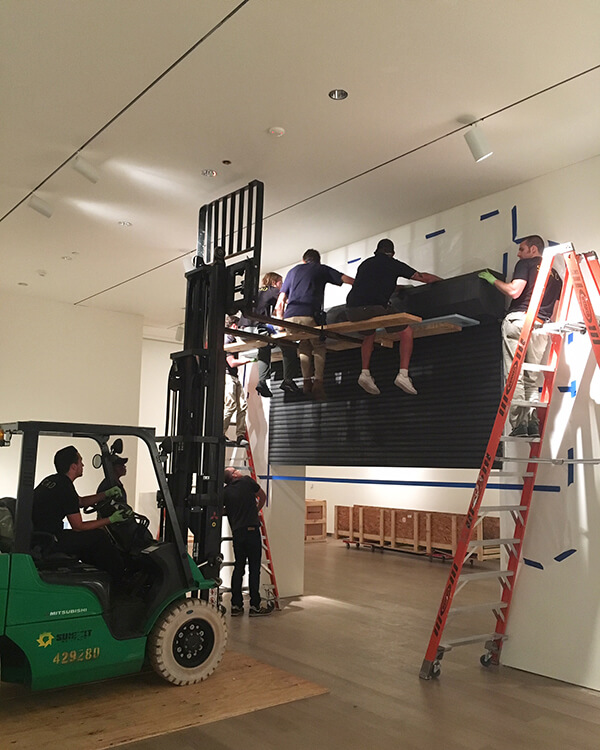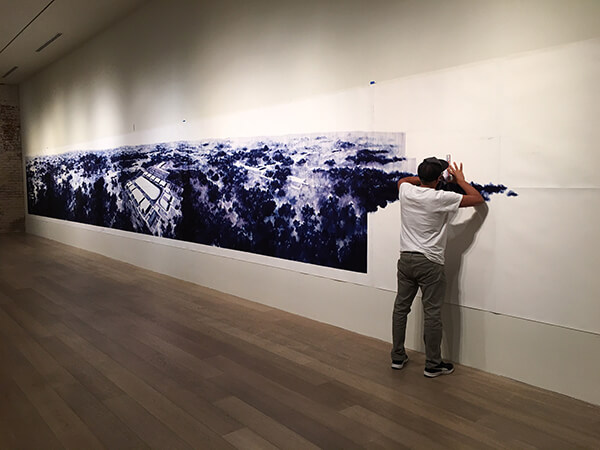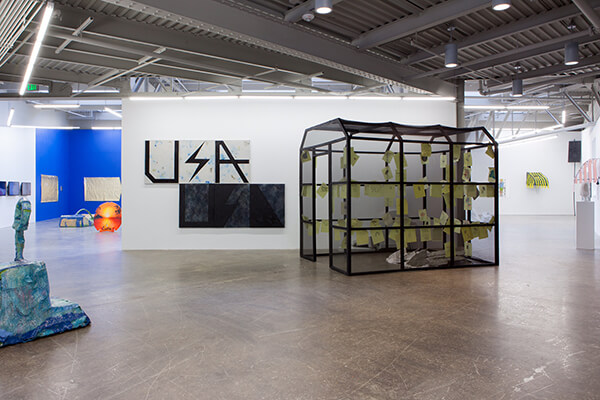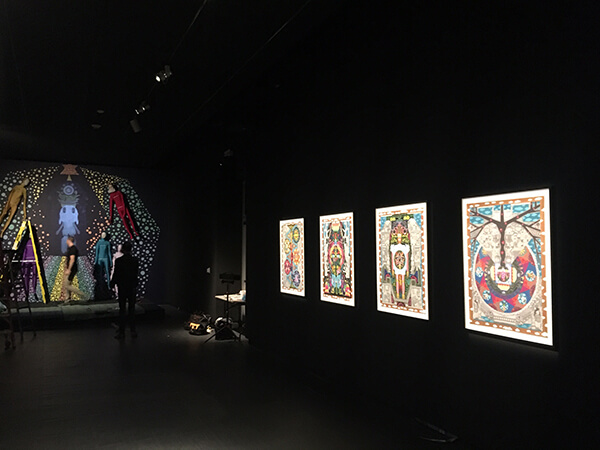Aaron Levi Garvey: Will A Real Curator Please Stand Up?

Has anyone recently noticed how overused and abused the word “curator” is at the moment? It’s gut-wrenching to know that a term formerly reserved for a distinguished, primarily academic-minded professional in an institutional or commercial exhibition environment can now apply to activities as mundane as arranging books on a shelf.

Void
Photo credit: Wesley Parsons and Elise Criger
There are still a few purists out there; those who consider the word “curator” to be earned rather than “assigned” by the quick shifts of social media algorithms or Twitter analytics. Aaron Levi Garvey is an independent curator, whose past credits include Assistant Curator at the Savannah College of Art and Design’s Museum of Art and assistant to the chief curator at the Museum of Contemporary Art Jacksonville (Florida). Now he and his wife Stevie Covart Garvey have founded a new Jacksonville-based artist residency program called Long Road Projects, with its primary objective to highlight and bolster emerging artists from the Southeastern U.S.
We’ve known each other now for almost, going on four years now, right? And we met on Facebook! I admired your candor when speaking about the abuse of the term “curator.” Do you think this general terminology usage has lessened? Increased? What do you think the word should mean?
It has been a while! Ah, the power of social media and MANY mutual friends! One of our first conversations revolved around the usage of the label “curator”. I firmly believe that the over-usage is spiraling out of control. It has become so chic, trendy and in vogue, that it has diminished the true meaning of being a “curator”. Traditionally, a curator is defined as a person in charge of a department of a museum [or other place where objects of art and/or science are collected], or a person who organizes and arranges a showing of art or other objects of interest. Now the term seems to apply to anyone with something to share. Whether it is an Instagram account or a shoe collection, all things are “curated” these days. Over the last couple of years I have heard and read the following job titles; Talent Curator, Content/Knowledge Curator, Curriculum Curator, Digital Curator, and my absolute favorite: Fireworks Curator, none of which are positions in museums. In my mind, this overzealous usage of the title minimizes the definition as a whole and cheapens it. All the years that we have spent working as museum and arts professionals gets cheapened by a Fireworks Curator. I think that curators should remain in line with their definitions and should be stewards for the arts, not someone that “curates their life” with artisanal lattes and [the] effortless, yet aesthetically pleasing, social media posts.

Installation for group exhibition of Built World
Co-curated by Aaron Levi Garvey, SCAD guest curator, and Storm Janse van Rensburg, SCAD Head Curator of Exhibitions
With assistance from Amanda York, SCAD Assistant Curator of Exhibitions
I’m not pleased that curators with degrees, with some level of institutionalized qualifications are being pushed aside in favor of “tastemakers” when it comes to structuring exhibitions, even if those “tastemakers” are highly intelligent and perceptive. Where do you place that fine line between contemporary art curator and “tastemaker”?
It is possible to have fabulous taste and not be considered a “tastemaker”. Much of what curators and arts professionals do is thankless and done in anonymity. Now the trend seems to be to place one’s personality on display alongside the artists work. Perhaps this comes from a need to seek fame or validation? Or is it a side effect of popular culture? Our popular culture revolves around reality television and social media, where anyone can become famous and well-known. I can understand why some highly intelligent and sensitive people might prefer to remain behind the curtain. I suppose there isn’t a line to be placed, just a changing construct around what is considered academic work done in the name of preservation and the ever-growing need for self-congratulation. I believe that in the long run, the dedicated intellectual pursuits of art historians, critics and curators will prevail.
Long Road Projects is your brand-new venture with co-founder/partner Stevie Covart Garvey. What is its mission and how do you plan to generate a wider audience for it?
LRP is a very small endeavor that we started, in hopes that it will develop into something to enact change, community building and cultural exchange. Our mission is to build a community atmosphere through educational and analytical arts-related programs for the public. We started it as a residency program and have expanded it into an edition-publishing house, as well. So far, we have focused on planting a small seed and letting it grow organically. We organize open studio visits for the community by appointment, free public lectures and collaborations for our visiting artists so that our community can engage with outside artists and create a dialogue. Our hope is that by making contemporary art and artists accessible, we can build a broader community and long-term relationships. Our second artist resident, Gamaliel Rodriguez, is in from Puerto Rico. This is his first of (likely) three research trips that we will coordinate. He is conducting research on the El Faro shipwreck. The ship was ported in Jacksonville, Florida and headed for San Juan, Puerto Rico in 2015 when it sunk off the shores of Florida during Hurricane Joaquin.

Reminiscent of Time Passed
Installation view
Do you think there’s still some value to the curator heavily embedded in a typical art institution, or should there be more of an external influence to balance the possibility of excess bureaucracy?
That’s a tough question, particularly since I am not affiliated with an institution at the moment. I am of two minds about it. Yes, I think there is value in an institutional curator because it can be a venue for them to advocate for passion projects with a budget to support them. Then again, I think about independent curators such as myself, who aren’t beholden to a board of checks and balances, and can push the envelopes of concepts and content. Sadly that comes at a hefty price, namely lack of funding and external support.

Installation view
Tell me about The Atlanta Biennial (ATBNL). Now that it’s completed, how are you feeling?
I had a blast working on this exhibition with my three colleagues and co-curators, Daniel Fuller (Curator, Atlanta Contemporary) Victoria Camblin (Editor and Artistic Director, Art Papers) and Gia Hamilton (Director, Joan Mitchell Center). We approached it very democratically. We had to agree on the artists included and reviewed each artist individually. Of course this was extremely tough task, summing up the entire Southeast in a single exhibition survey. Prior to making our selections, we gave ourselves a set of rules, such as having not exhibited in a previous Atlanta Biennial, currently living in the Southeast with an active studio practice and no prior exhibitions within the Atlanta Contemporary in the last 3-5 years. Unfortunately we had to leave out some really incredible artists, but it was important nonetheless. As stewards of the arts, we would be doing artists, their CV’s and the community a disservice to exhibit artists in a museum they have already been displayed in. We spent weeks and weeks on conference calls and Skype sessions reviewing artist nominations; I personally feel like I learned so much more about the region and through the process have been exposed to so many more artists that I didn’t know before. As a result, we created a database that we continue to build on and share with each other. It was such a great curatorial and educational experience. I would do it again in a heartbeat!

Installation view
Relieved to see you rode out Hurricane Matthew (genuinely fearful and nerve-wracking). What’s next?
Thankfully Hurricane Matthew was uneventful for us, we are very relieved! What’s next- where do I start? I have three exhibitions opening in the next four months: solo exhibitions for Saya Woolfalk, Jose Davila and Chiharu Shiota. On top of that, I am working on a proposal for Armory Week 2017, studio visits at the Joan Mitchell Center in New Orleans, the rolling residents and publishing for LRP, an exhibition at the Contemporary Art Center in New Orleans set to open in August 2017 and flushing out another proposal for an exhibition in May 2017 in New York. I can’t talk much more about that one exhibition until it is 100% confirmed and a date is set, but once it is I will definitely tell you ASAP. It’s going to be a big one!
Responses